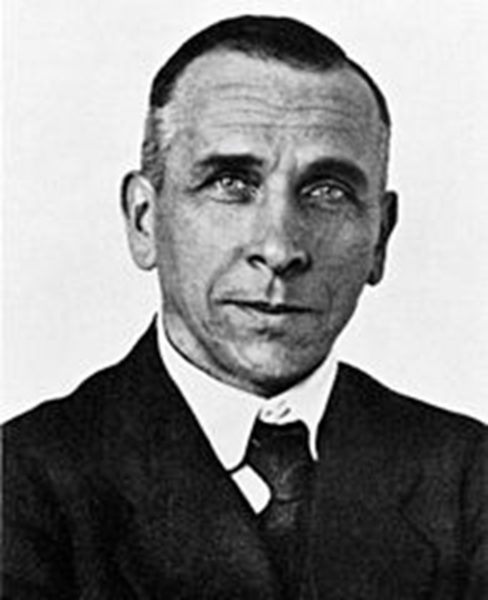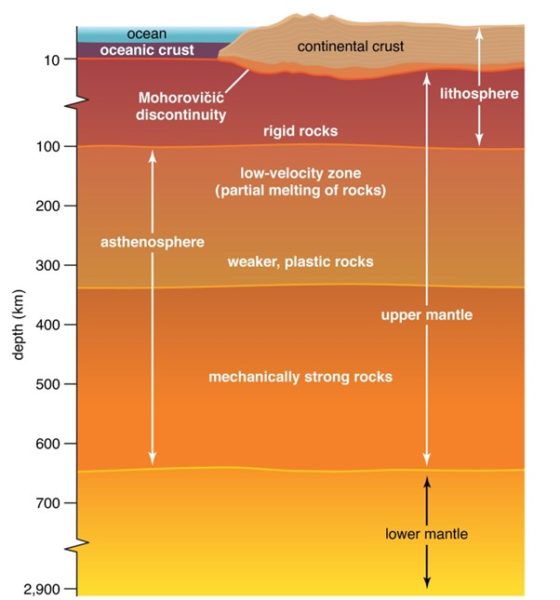Contact Us
Tuesday 28th February 2023 | Blog written by Neil McLauchlan, Route Engineer

Alfred Wegener is generally attributed as the pioneer of plate tectonics. In 1915 he published his theory of continental drift. The theory expanded an already popular idea, hypothesised by Antonio Snider-Pellegrini in 1858, that Africa and South America could fit together nicely, which works even better now we know where the edge of the continental shelves are located. He applied this to other continents across the globe and, after studying rock formations, fossils, and climate indicators, he formulated that they were separated over large periods of time, creating the idea of divergent plates. Although, he could not explain how the plates moved.
The sea floor is constantly changing, whether from growth in flora and fauna, habitats, wildlife, human intervention or geological reasons. It can be a gradual evolution or a sudden unpredicted change from something like an earthquake or volcano. Wegener’s late tectonic theory was born back in 1915, but since then has continued to develop as our understanding has deepened about this geological phenomenon, giving us even more intelligence to assist in cable routing today.


In 1947 a new technology similar to sonar, called echosounding, was deployed by researchers to map the Atlantic Ocean. Bruce Heezen and Marie Tharp used this data to create the first detailed map of the seafloor, discovering the Mid-Atlantic Ridge.

It wasn’t until 1962, when Harry Hess published his theory of seafloor spreading, that geologists started to take note of plate tectonics. Hess theorised that oceans grew from their centres along mid-ocean ridges created by molten material rising from the upper mantle. Over time they cool and subside before being subducted under continental plates, causing oceanic trenches. Hess also theorised that the ocean floor was destroyed and recycled at trenches, giving rise to the idea of convergent plates. Although, he too could not explain the process.
In the next few years several scientists published theories that confirmed Wegener’s and Hess’s theories. In 1963 Frederick Vine and Drummond Matthews published a paper on ‘Magnetic anomalies over oceanic ridges’. It detailed a symmetrical pattern to magnetic anomalies observed in oceanic crust parallel to ridges, which was also independently theorised by Lawrence Morley. They theorised oceanic floor was created along ridges and then separated by later activity. These magnetic anomalies are created in oceanic crust thanks to basalt being iron rich; when the rock solidifies the iron captures the polarity of Earth’s magnetic field at that time, which reverses frequently causing a ‘barcode’ effect.

In 1963 John Tuzo-Wilson proposed that tectonic plates moved over fixed hotspots in the mantle. This explained why volcanic island chains, like Hawaii, could be found thousands of kilometres away from suspected plate boundaries. In 1965 he also theorised that convergent and divergent plates were linked by a type of plate that slips horizontally and allows them to pass each other without creating or destroying any crust, giving rise to the idea of transform (conservative) plates. In 1968 he developed a theory that described the opening and closing of oceanic basins, from continental rifting to mountain building (orogenic) events caused by continent-to-continent collision. Later named the ‘Wilson Cycle’.

In 1966 Dan McKenzie demonstrated how the motion of the mantle could control the behaviour of tectonic plates that was far more dynamic than any previous model. McKenzie was an expert in thermodynamics and convection currents and applied this knowledge to suggest there are two sections of the mantle (upper and lower) that demonstrated different viscosities. He also played a big part in understanding factors leading to partial melting of the mantle, the composition of magma and how it would interact with the crust at shallower levels. McKenzie is also the author of one of the most cited papers in geology, which describes rifting, faulting and sediment basins.

Along with earthquakes and volcanoes, other by-products of plate tectonics can include: landslides; tsunamis; expansion/collision/transform movement rates; oceanic trenches; as well as hydrothermal vents and the associated chemosynthetic organisms. All of which can impact, often negatively, the precious cable assets which are on the seabed connecting islands, countries and continents together, and must therefore form a part of the cable route engineering process. An increasing number of obstacles are being formed on the sea floor which need to be fully understood and factored in to cable route planning. Our Cable Protection Assessment, Cable Fault Database and Charting Services all support this understanding and form the basis of a solid solution.
References:
BGS, 2022. What causes earthquakes? British Geological Survey. Available at: https://www.bgs.ac.uk/discovering-geology/earth-hazards/earthquakes/what-causes-earthquakes/
GeolSoc, 2022. Plate Tectonics. The Geological Society. Available at: https://www.geolsoc.org.uk/Plate-Tectonics
Johnson, C., et al., 2017. An Introduction to Geology. Chapter 2 Plate Tectonics. Salt Lake Community College. Available at: https://opengeology.org/textbook/
Means, T., 2022. What is plate tectonics? Live Science. Available at: https://www.livescience.com/37706-what-is-plate-tectonics.html
University of California, Berkeley. Plate Tectonics. University of California, Berkeley. Available at: https://ucmp.berkeley.edu/geology/tectonics.html
van Andel, T. H., 2022. Plate tectonics. Encyclopaedia Britannica. Available at: https://www.britannica.com/science/plate-tectonics
Wilson, R. W., et al., 2019. Fifty years of the Wilson Cycle concept in plate tectonics: an overview. Geological Society, London, Special Publications. Vol 470. pp 1-17. Available at: https://www.lyellcollection.org/doi/10.1144/sp470-2019-58

Neil is one of OceanIQ’s experienced Route Engineers